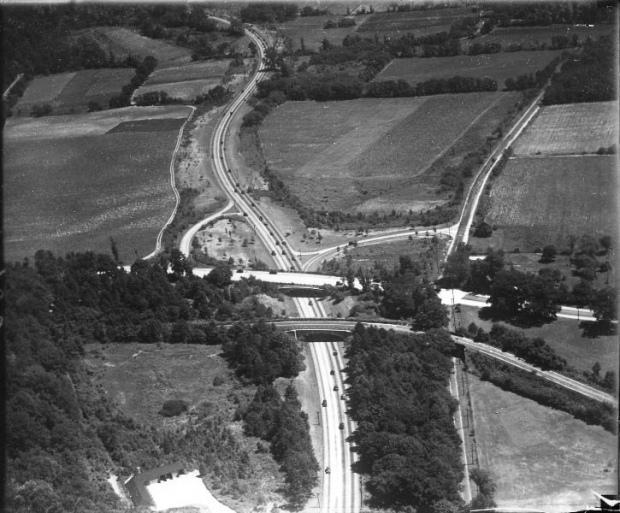Newsday Article: “Moses exhibit shows builder’s ups, downs’

Newsday reporter Bill Bleyer reports on a new exhibit on Robert Moses that has opened at the Planting Fields Arboterum State Historic Park in Oyster Bay. The exhibit includes historical documents from my collection concerning Robert Moses and the Long Island Motor Parkway:
Moses exhibit shows builder's ups, downs
Updated: June 17, 2011 8:28 PM
By BILL BLEYER [email protected]
Henry Joyce says there were several reasons for creating an exhibit on master builder Robert Moses at Planting Fields Arboretum State Historic Park.
"Moses' papers are deposited here" in a new Long Island state parks archive in the Hay Barn, said Joyce, executive director of the Planting Fields Foundation. The nonprofit parks support organization operates Coe Hall, the William R. Coe mansion in the park, where the exhibit opens Saturday.
And the approach highway for a project Moses never got to build -- the Bayville-Rye Bridge over Long Island Sound -- would have been just over the hill separating Planting Fields and Oyster Bay Harbor.
Another connection, Joyce said: the design of Moses' parkways was based on landscaping concepts used at Planting Fields and other estates.
Moses, as chairman of the Long Island State Parks Commission from 1924 to 1963 and in other positions, reimagined the Island, creating 15 major parks and 175 miles of parkways.
"He is still a controversial figure and a lot of people want to know about him," Joyce said. "We wanted to look at his pluses and minuses. The great parks that he accomplished are phenomenal. Jones Beach is the finest park of its kind."
But while his parkways and expressways spurred development and helped Long Islanders get around more easily, Moses' disinterest in mass transportation yielded sprawl and congestion, Joyce said.
Joyce considers the bridge, also known as the Oyster Bay-Rye Bridge, one of Moses' most ill-conceived concepts, which is underscored by the inclusion of 15 protest posters created in the early 1970s by the Bayville-based Coalition Against An Unsound Bridge.
"He was a great visionary and he got things done," Joyce said. "But luckily people stopped him from doing certain things like the Oyster Bay Bridge" -- killed in 1973 after creation of the Oyster Bay National Wildlife Refuge blocked its path. Joyce said it would have ruined "the incredible natural resources all around here."
That view was almost universally shared on the North Shore and still is, but the construction industry and others pushed hard for the project. The idea of a crossing in the area persists with developer Vincent Polimeni's proposal for a tunnel.
Other artifacts on display include maps from the 1930s depicting Moses' planned roadways from Manhattan to Montauk Point, 1964 New York World's Fair souvenirs, a 1930 lifeguard's bathing suit and a section of support cable from the Bronx-Whitestone Bridge.
The exhibit, which runs through Sept. 30, is open daily from 11:30 a.m. to 3:30 p.m. It is included in the regular admission for the mansion: $3.50 per person, younger than 12 free. There is an $8-per-car parking fee.
A lecture on Moses will be given at 2:30 p.m. Sunday by retired Hofstra University professor Natalie A. Naylor.


Comments
Finally, the man who made Long Island gets the recognition he deserves.
Check ou my video, “Robert Moses, Long Island’s Master Builder,” on YouTube:
http://www.youtube.com/watch?v=zGMdyCdCT9c&feature=youtube_gdata_player
Fred Hadley